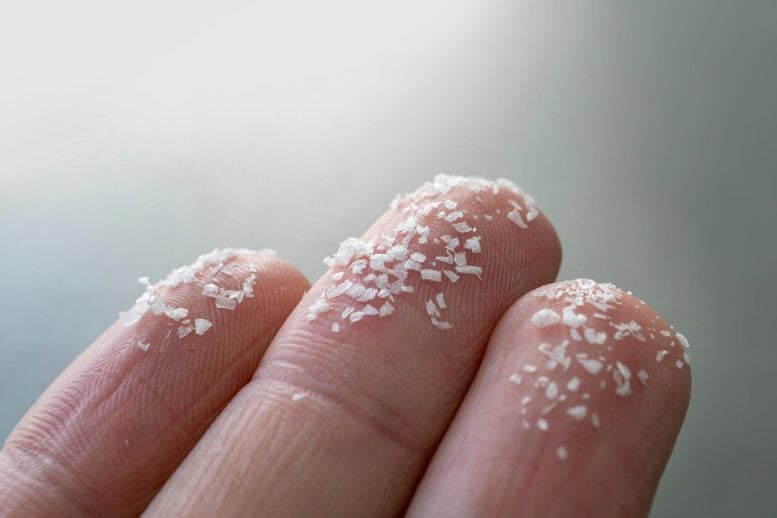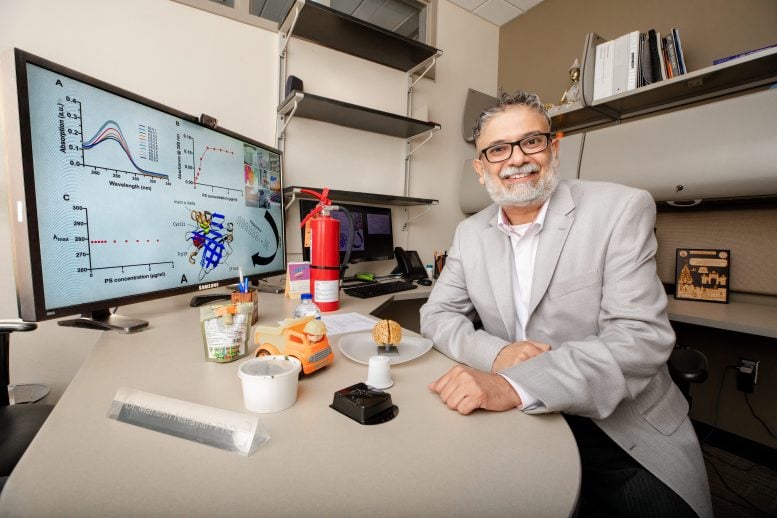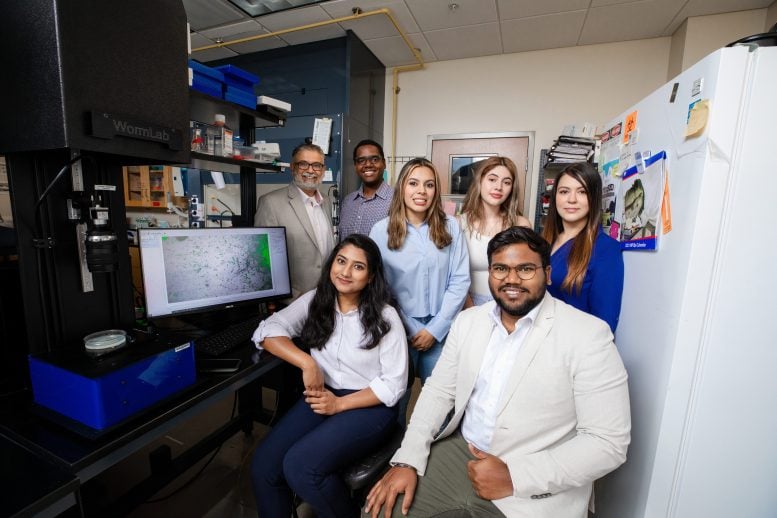
UTEP researchers have found that nanoplastics and PFAS significantly alter proteins critical to human development, such as those in breast milk and myoglobin, potentially leading to developmental abnormalities and other health problems. These findings underscore the urgent need for safer alternative materials and inform future environmental policies.
UTEP study finds nanoplastics and permanent chemicals alter crucial proteins in breast milk and infant formula.
Researchers at the University of Texas at El Paso have made significant advances in the study of nanoplastics and perfluoroalkyl and polyfluoroalkyl substances (PFAS), also known as forever chemicals. Their research demonstrates how these compounds can alter the structure and function of biomolecules. Specifically, the team found that these substances can alter proteins found in human breast milk and infant formula, potentially leading to later developmental problems.
Nanoplastics and permanent chemicals are synthetic compounds found in the environment. A series of recent studies have linked them to a number of adverse health effects. While nanoplastics are primarily produced by the breakdown of larger plastics, such as water bottles and food packaging, permanent chemicals are found in a variety of products, such as kitchenware and clothing.
The UTEP research team focused on the compounds’ impact on three proteins critical to human development and function: beta-lactoglobulin, alpha-lactalbumin and myoglobin. Their findings, which provide atomic-level insight into the adverse effects of nanoplastics and PFAS on human health, are described in two recent articles in the journal Journal of the American Chemical Society And ACS Applied Materials and Interfaces.

Mahesh Narayan, Ph.D., professor and head of the division of biochemistry in the UTEP Department of Chemistry and Biochemistry. Credit: University of Texas at El Paso
“By understanding the molecular mechanisms by which nanoplastics and chemicals disrupt cellular functions, scientists can develop safer alternatives to these materials,” said Mahesh Narayan, Ph.D., professor, fellow of the Royal Society of Chemistry and head of the division of biochemistry in the Department of Chemistry and Biochemistry at UTEP, who oversaw both studies. “The insights gained from this research have far-reaching implications.”
Narayan said that, more importantly, their research found that nanoplastics and PFAS completely “dissolve” a region of proteins known as the alpha helix, converting them into structures called beta sheets.
“We didn’t expect them all to have a similar impact on the alpha helix,” Narayan said. “It was pure coincidence.” The team observed that this alteration also occurs in amyloid proteins, which can cause neurodegeneration and neurotoxic effects if the synthetic chemicals reach the brain.
Other key findings from the studies are described below.
Milk protein: beta-lactoglobulin (BLG)
BLG is a protein found in sheep and cow’s milk and is commonly used as an ingredient in infant formula. This protein binds to retinol (vitamin A) and fatty acids and is essential for infant vision and brain development.
The research team found that BLG’s binding efficiency to retinol and fatty acids decreases after exposure to nanoplastics and PFAS. This decrease, modeled by Lela Vukovic, Ph.D., associate professor in the Department of Chemistry and Biochemistry, can lead to significant developmental problems in newborns, the team said.
Additionally, for the first time, the team observed that PFAS bind to milk proteins, turning them into a vector for these compounds.

The research team includes (top row, left to right): Mahesh Narayan, Ph.D., professor and head of the division of biochemistry in the UTEP Department of Chemistry and Biochemistry; Randhal Ramirez Orozco, doctoral student in computer science; Sophia Borrego, sophomore in biomedical sciences; Samantha Arce, sophomore in biomedical sciences; Daisy Wilson, doctoral student in environmental science and engineering; (bottom row, left to right) Ummy Habiba Sweety, doctoral student in environmental science and engineering; and Jyotish Kumar, doctoral student in the Department of Chemistry and Biochemistry. Lela Vukovic, Ph.D. (not pictured), associate professor in the Department of Chemistry and Biochemistry, also participated in the research. Credit: University of Texas at El Paso
Breast milk: alpha-lactalbumin
Alpha-lactalbumin is present in human breast milk, is involved in the synthesis of lactose, and is ingested by infants to meet their nutritional needs. UTEP researchers found that nanoplastics and PFAS alter the structure of the alpha-lactalbumin protein, potentially compromising lactose formation. The team said this disruption can lead to downstream developmental defects in newborns, such as compromised immunity and reduced mineral absorption.
Oxygen storage: myoglobin
Myoglobin, found in the blood and muscle tissues of most mammals, is essential for storing oxygen. The UTEP research team found that nanoplastics and PFAS compromise the functionality of the myoglobin protein, disrupting its ability to store oxygen. This disruption could lead to health problems such as shortness of breath and anemia.
Further experiments by the team demonstrated that exposure to nanoplastics impairs the worms’ locomotion, with effects comparable to those of paraquat, a herbicide associated with Parkinson’s disease.
“This work has the potential to have a profound impact on public health and environmental policy, highlighting the vital role of scientific research in addressing global challenges,” said Robert Kirken, Ph.D., dean of the College of Science. “I am proud of the groundbreaking research conducted by Dr. Narayan, Dr. Vukovic and their teams. Their innovative approach to understanding how these engineered materials disrupt biomolecular functions is a perfect example of the transformative work that UTEP researchers routinely accomplish.”
Narayan and his research team plan to continue their studies and investigate the effects of other plastics and PFAS compounds.
References: “An atomic and molecular insight into how PFOA reduces α-helicity, compromises substrate binding, and creates binding pockets in a model globular protein” by Anju Yadav, Lela Vuković, and Mahesh Narayan, April 24, 2024, Journal of the American Chemical Society.
DOI: 10.1021/jacs.4c02934
“Interfacial Interactions between Nanoplastics and Biological Systems: Towards an Atomic and Molecular Understanding of Plastic-Induced Biological Dyshomeostasis” by Afroz Karim, Anju Yadav, Ummy Habiba Sweety, Jyotish Kumar, Sofia A. Delgado, Jose A. Hernandez, Jason C. White, Lela Vukovic, and Mahesh Narayan, May 9, 2024, ACS Applied Materials and Interfaces.
DOI: 10.1021/acsami.4c03008